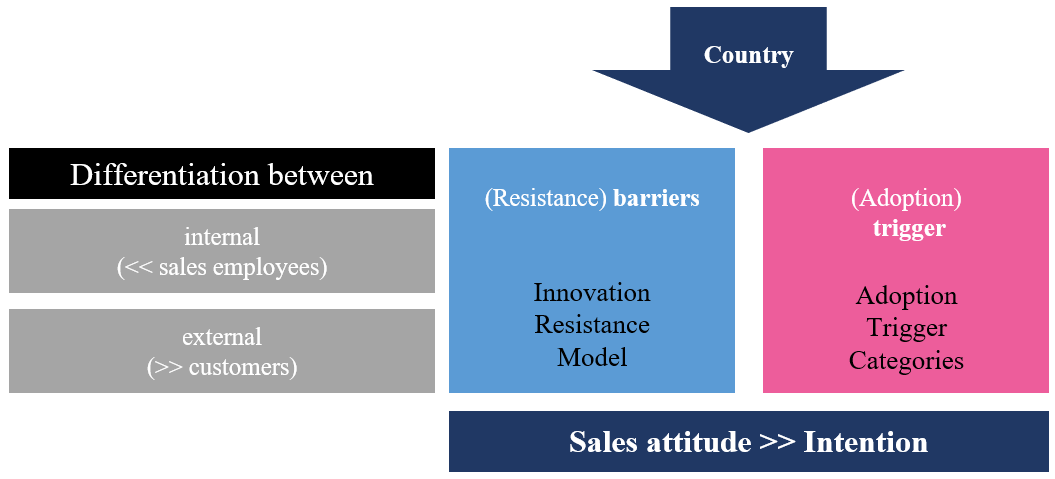Unlocking Sales Potential in the Digital Era
In manufacturing, sales employees with engineering backgrounds are used to sell products. Digital transformation impacts sales to sell digital offerings. What are strategies for overcoming barriers to selling digital offerings in a manufacturing company?

Topic
This research delves into a case study focusing on a manufacturing company, exploring the multifaceted aspects of (resistance) barriers and adoption triggers pertaining to a digital offering as perceived by sales employees. In a manufacturing company, most sales have an engineering background and are used to sell hardware products to customers. What are the sales barriers when it comes to selling a digital offering? Which strategies help overcome the barriers, and do the sales attitudes or the country influence the adoption?
Relevance
Many companies are shifting from selling products to selling services; this is the concept of business servitization. Understanding the impact on the sales organization and what strategies can be applied to overcome the associated barriers is important. Therefore, the research questions are
1) Why do salespeople not sell digital offerings?
2) How to overcome barriers of sales to selling digital offerings?

Results
The Innovation Resistance Theory (IRT), developed for consumer resistance, also applies to sales employees. Sales are not selling a digital offering because knowledge is missing, changes are required related to the usage barrier, an incentive is missing, or there are product development gaps. An extensive and diverse product portfolio leads sales to focus on the revenue-bringing components, not so much on the new digital offerings, as this would require them to leave their comfort zone. Sales attitudes and country influences can moderate the perception of barriers and triggers for sales employees.
Implications for practitioners
Strategies to overcome sales employees' barriers:
- Take feedback within the organization seriously. Sales require knowledge acquisition, internal and cross-country support to increase their confidence.
- Have targets and prioritization for incentivization and (local) references to find opportunities and have justification for customers.
- Focus on the open and curious, not being afraid of new and technology-driven sales employees, and have at least one dedicated product manager for digital offerings locally.
- Use digital offerings as internal tools for servitization towards the customers to increase and secure the business and for improve customer relations. Additionally, it can create new business models for a servitization strategy and changes the brands' perception.
Methods
In a manufacturing company case study, 30 sales employees from different countries are interviewed remotely using semi-structured interview guides following a qualitative approach to answer the research questions. First, the barriers from the IRT are being validated for employees, and second, the adoption triggers are summarized in a category system. Following an inductive approach, thematic categories are created close to the transcripts. Afterwards, they are combined into analytical categories considering existing models and their categories following a deductive analysis of the codes. The method that was used is according to Kuckartz (2019).

